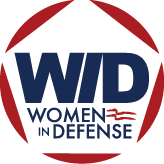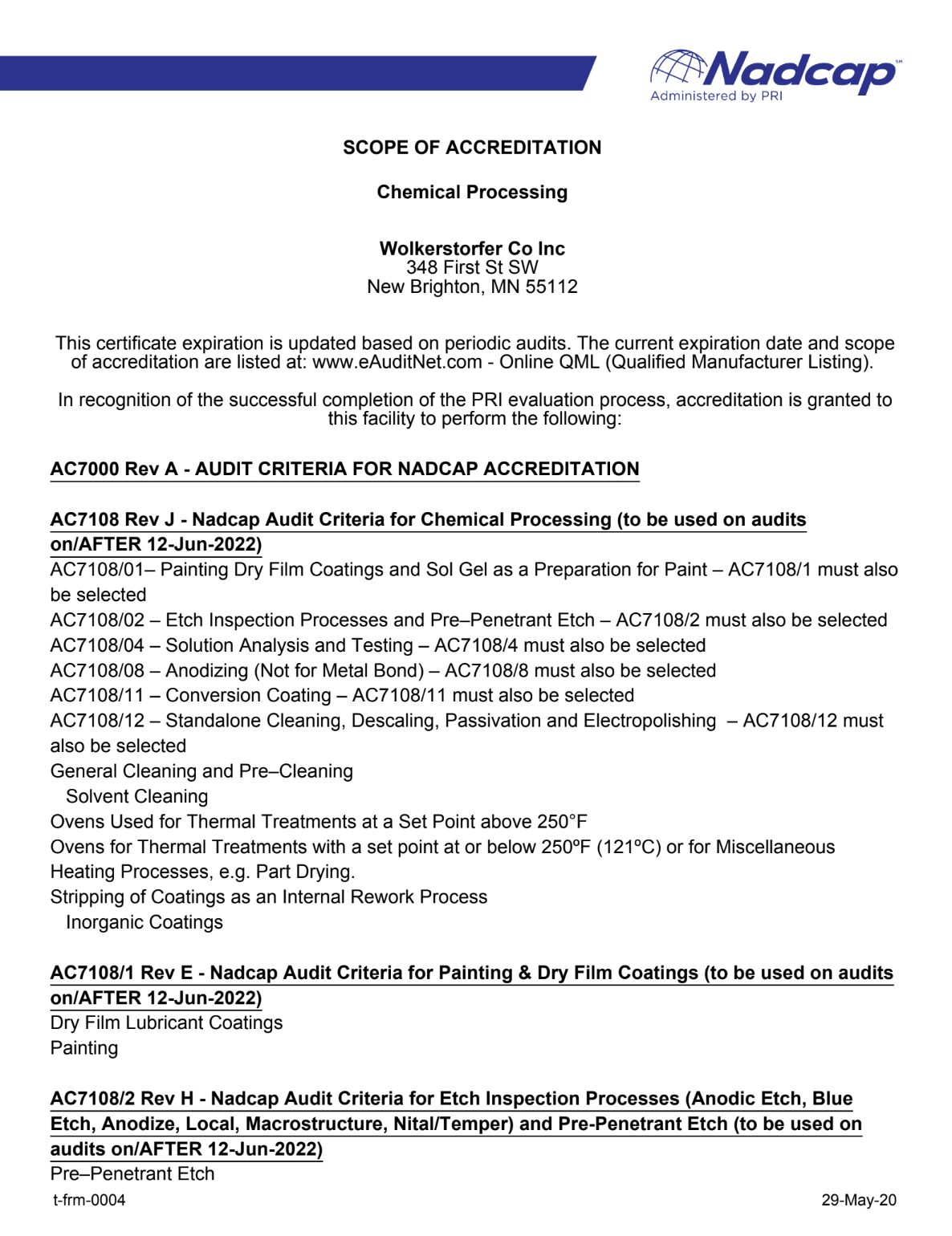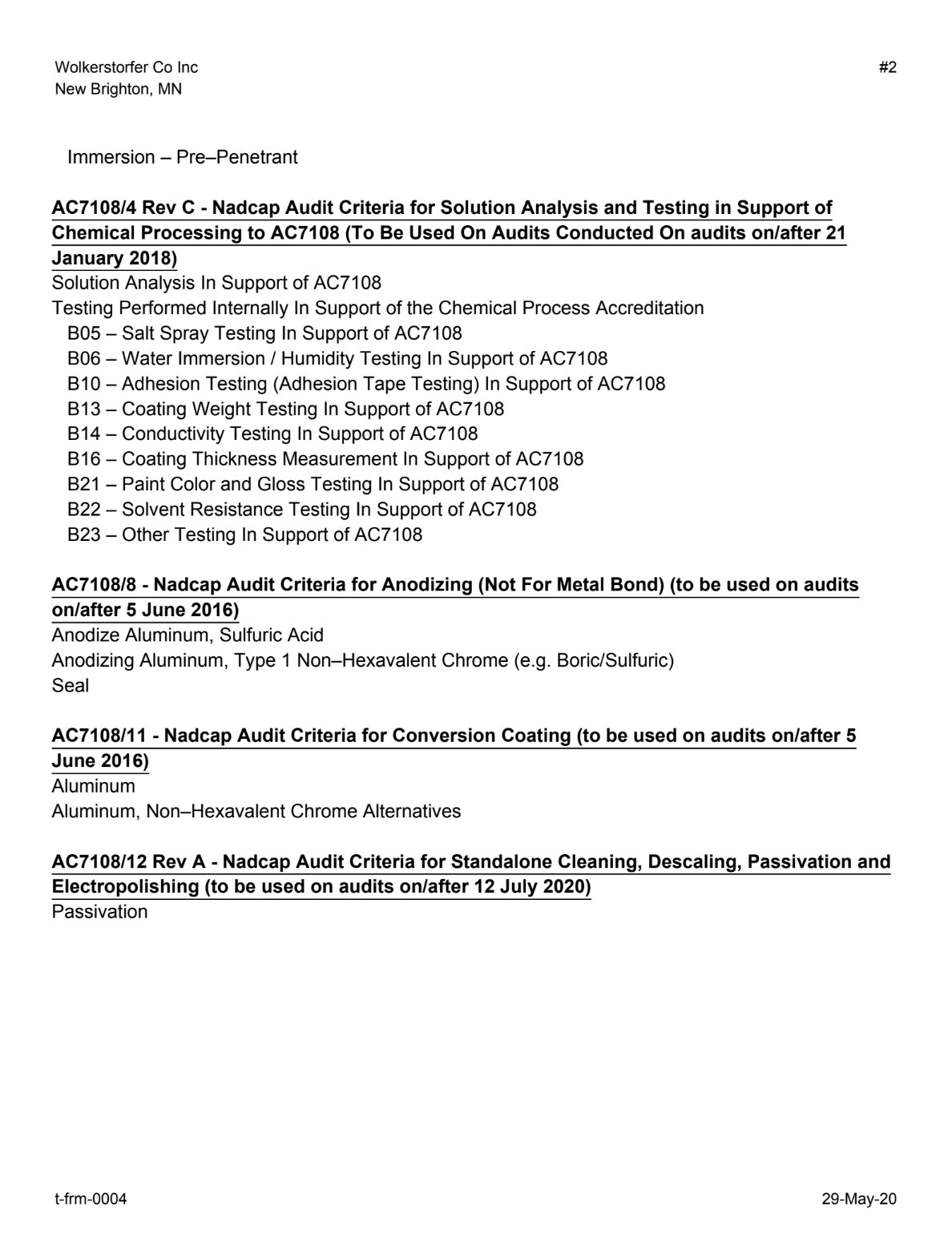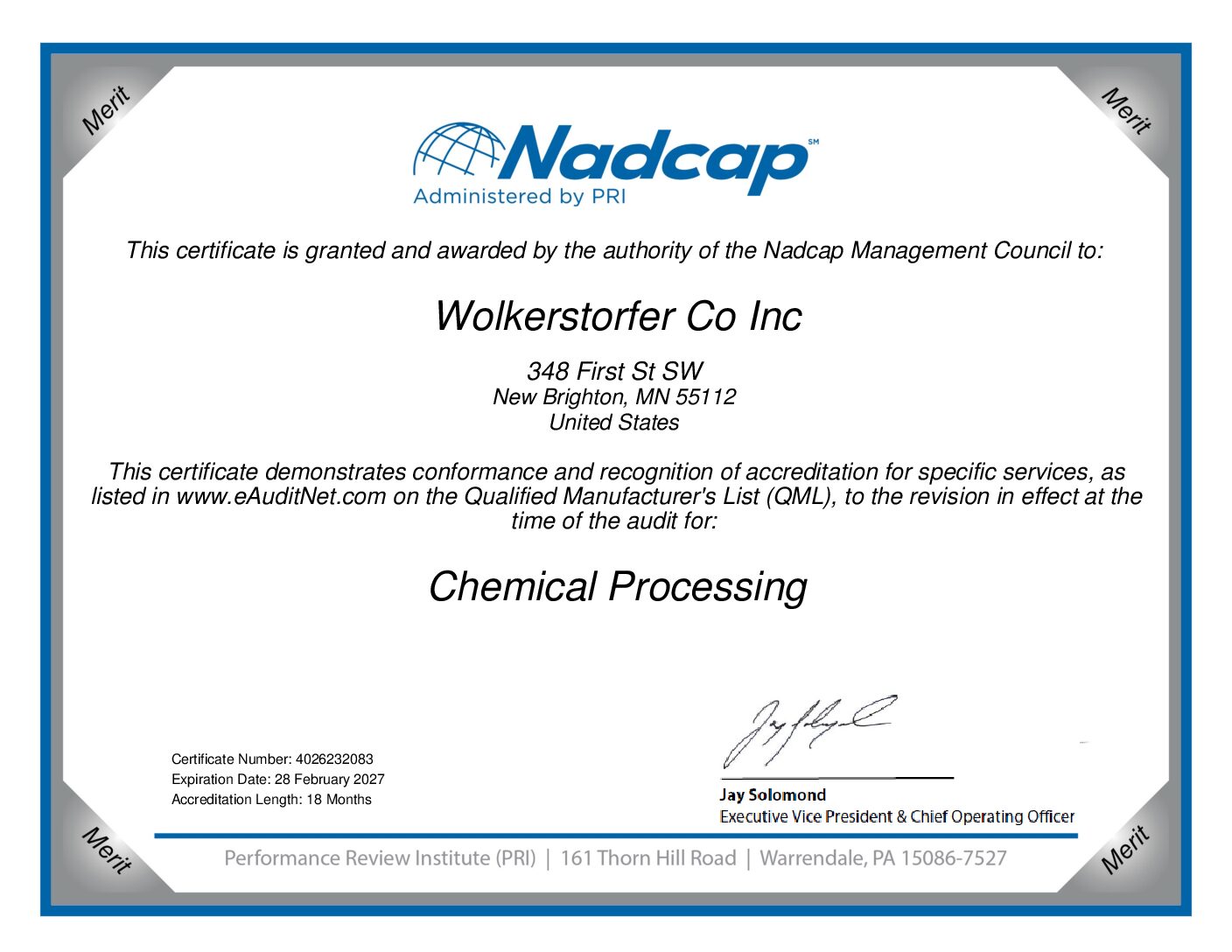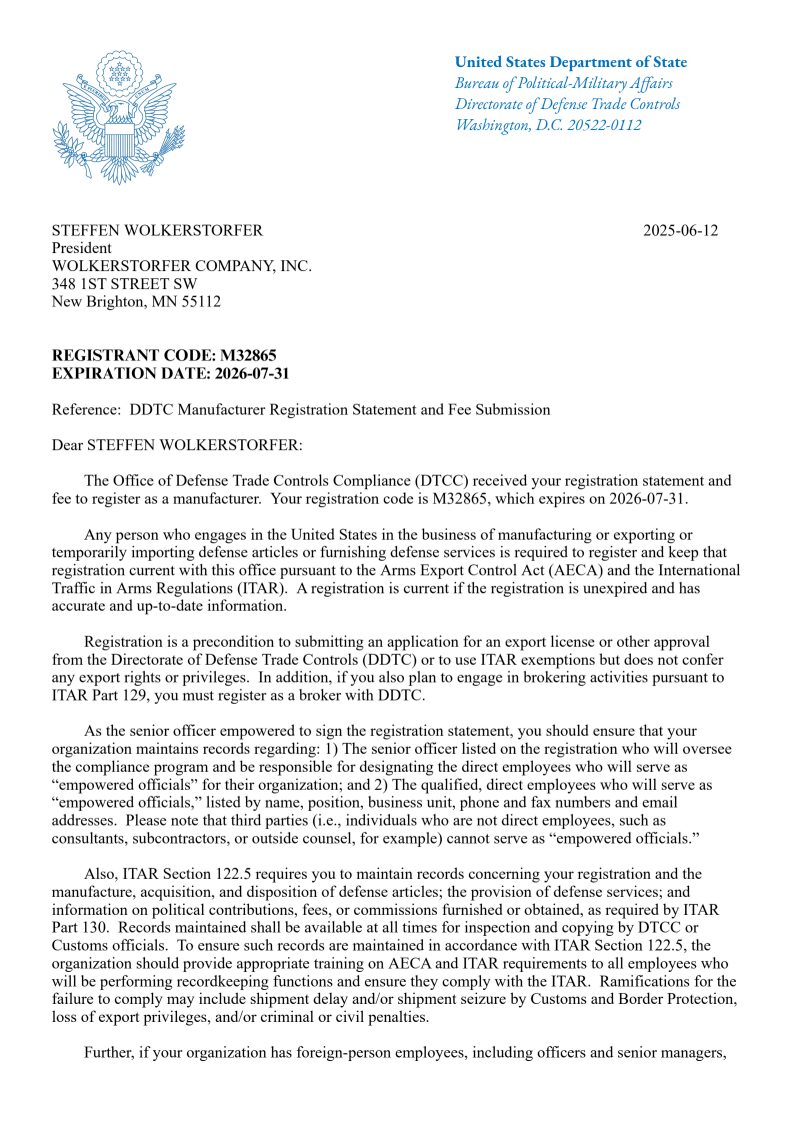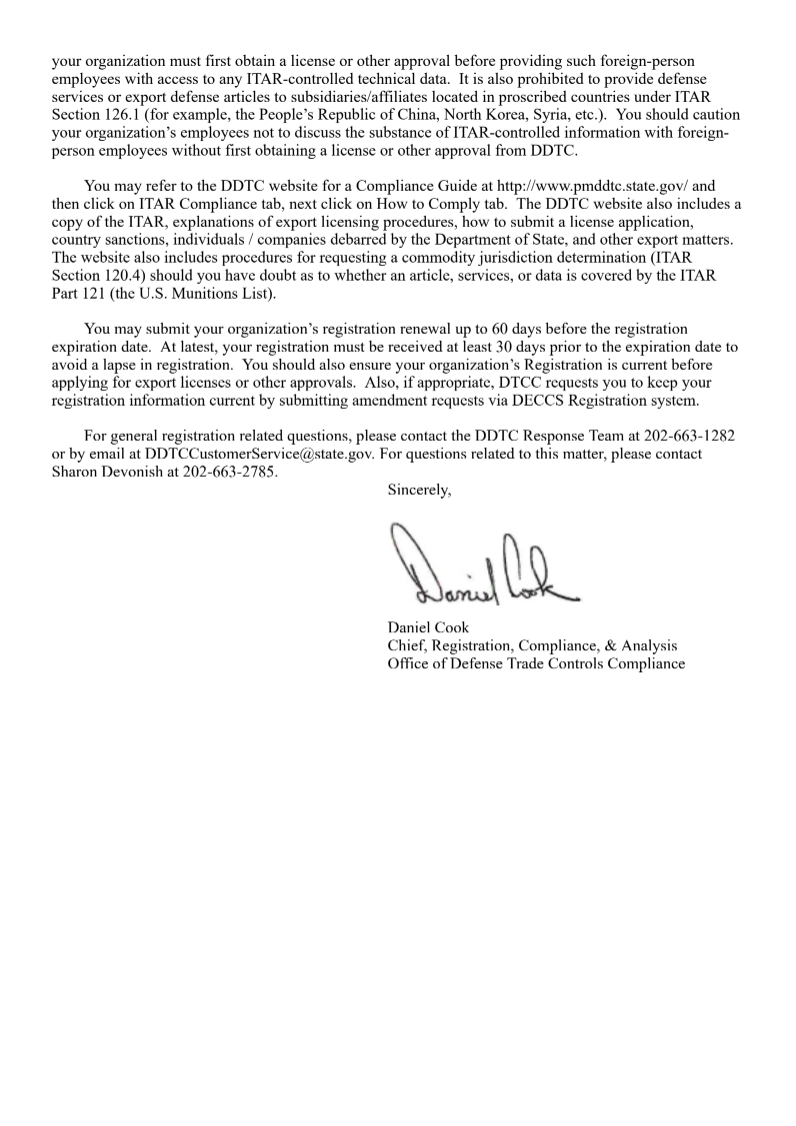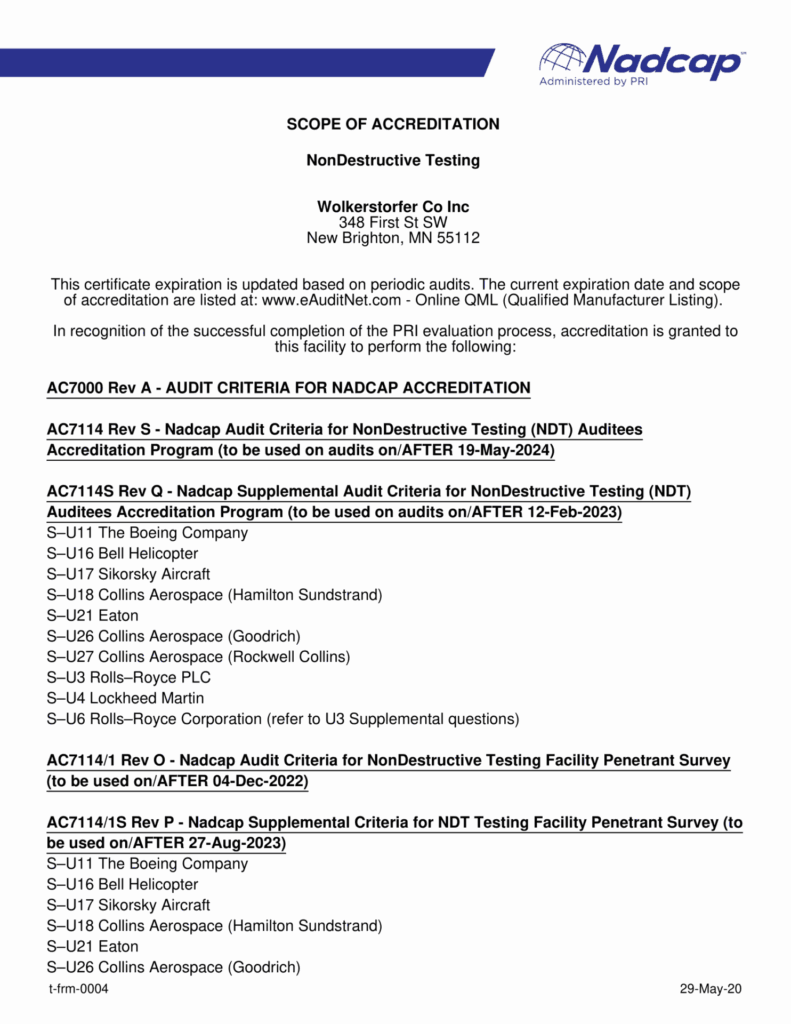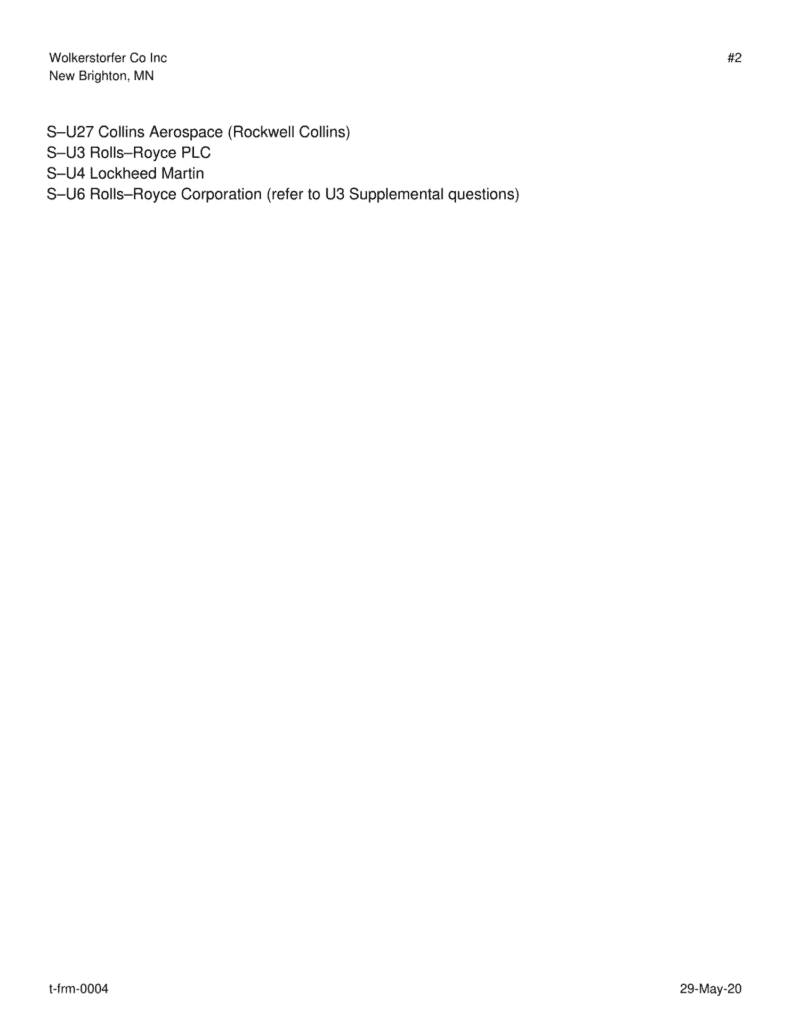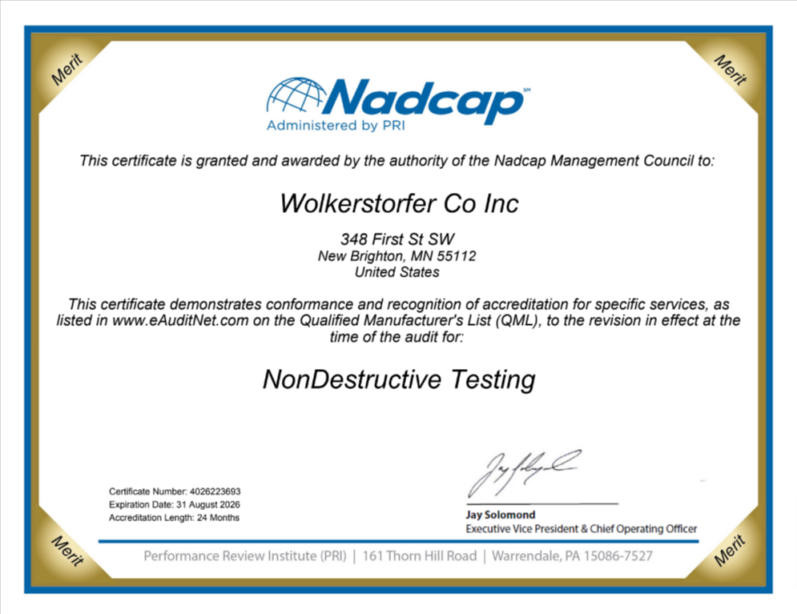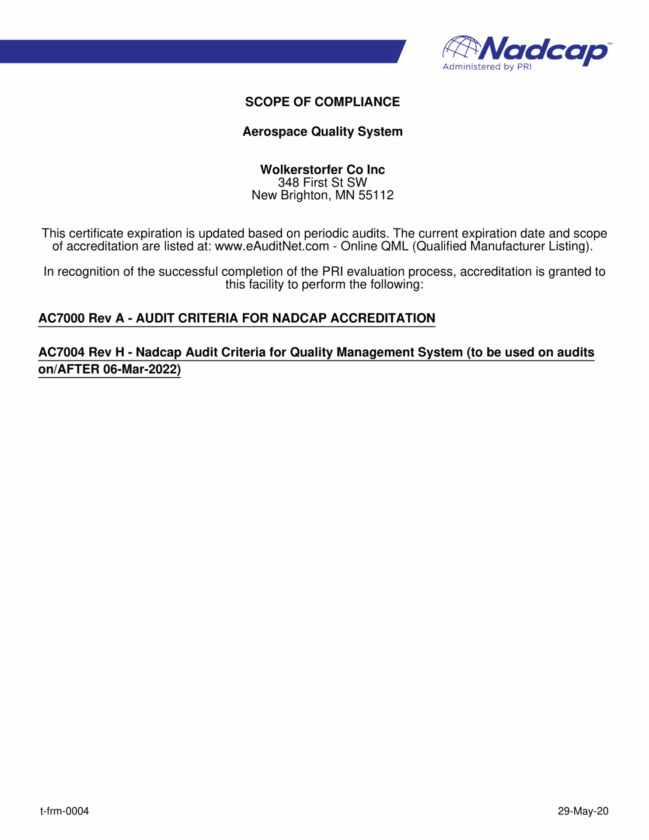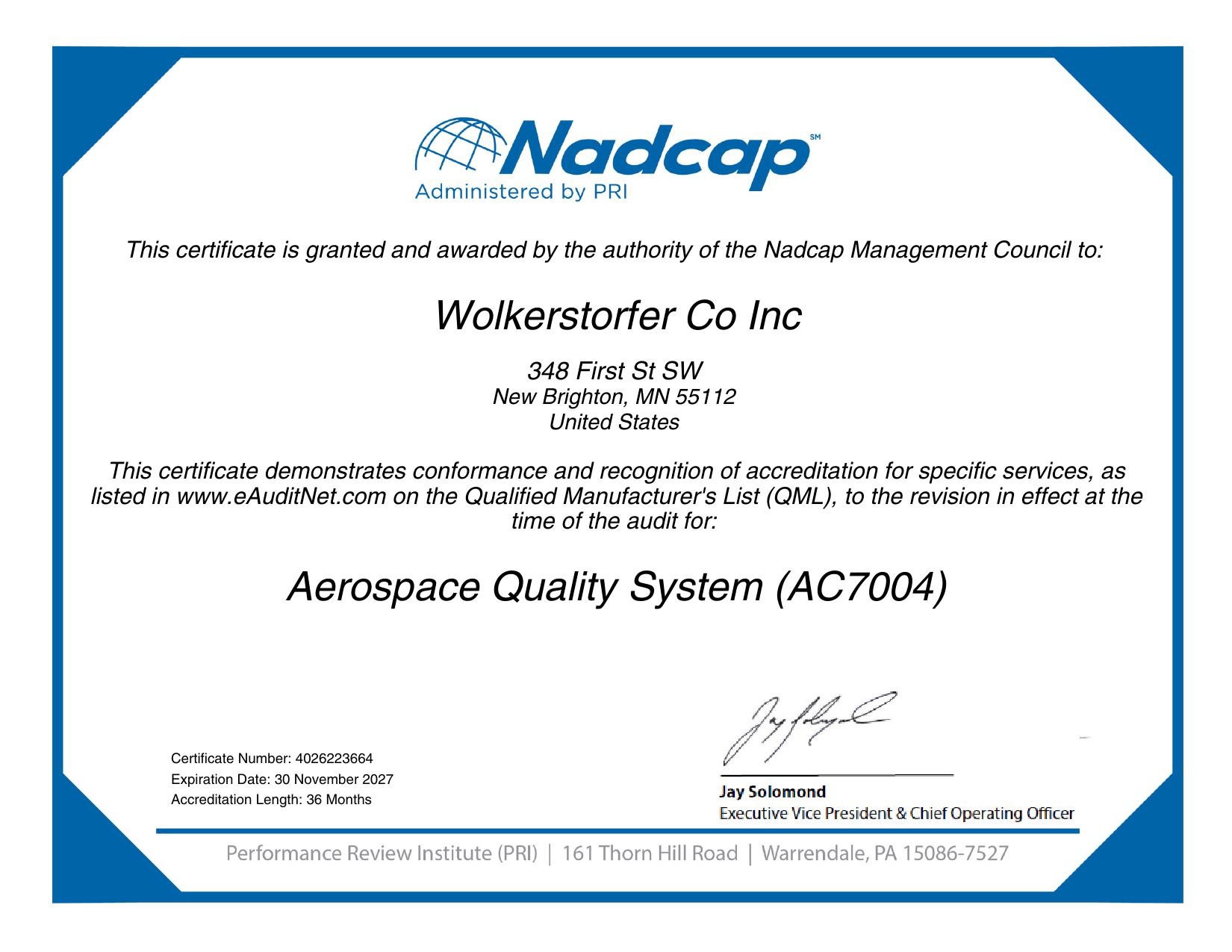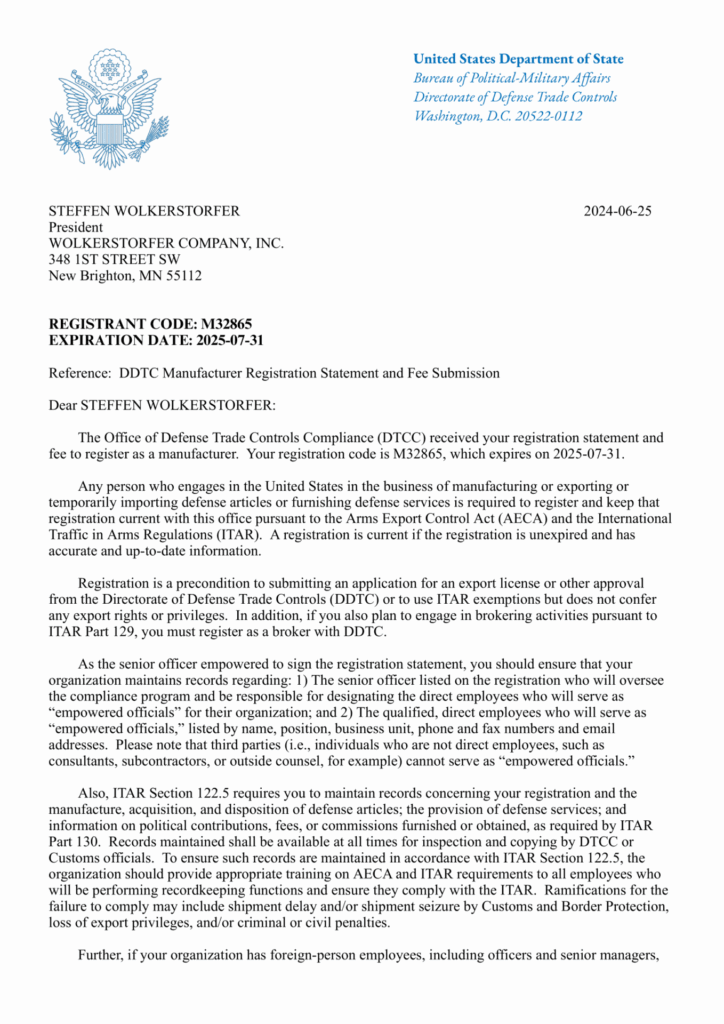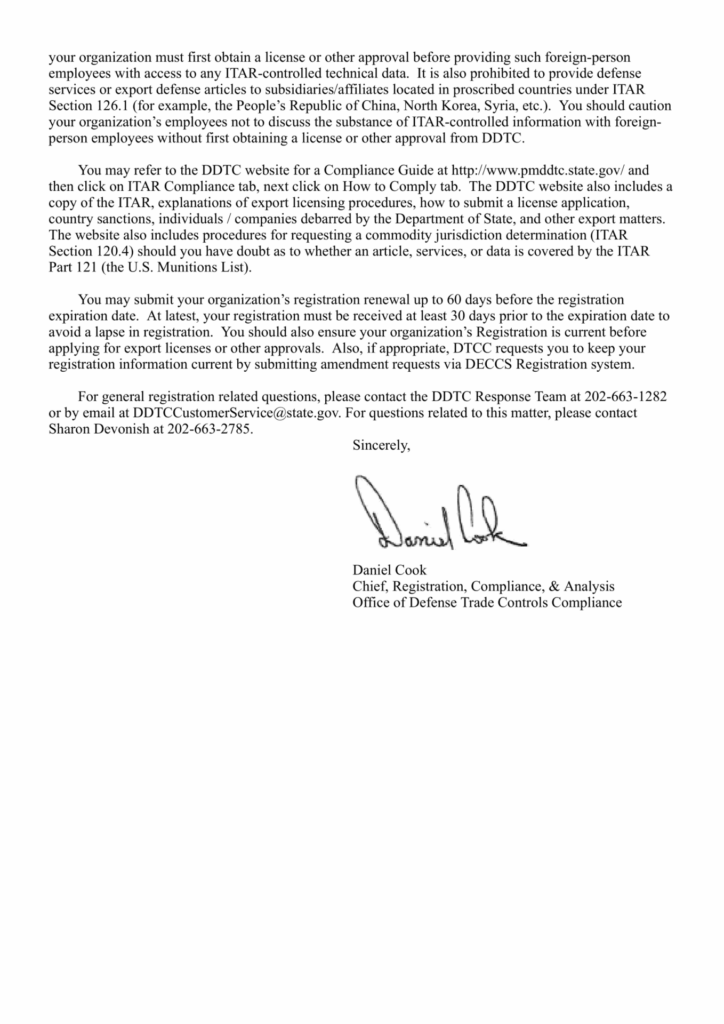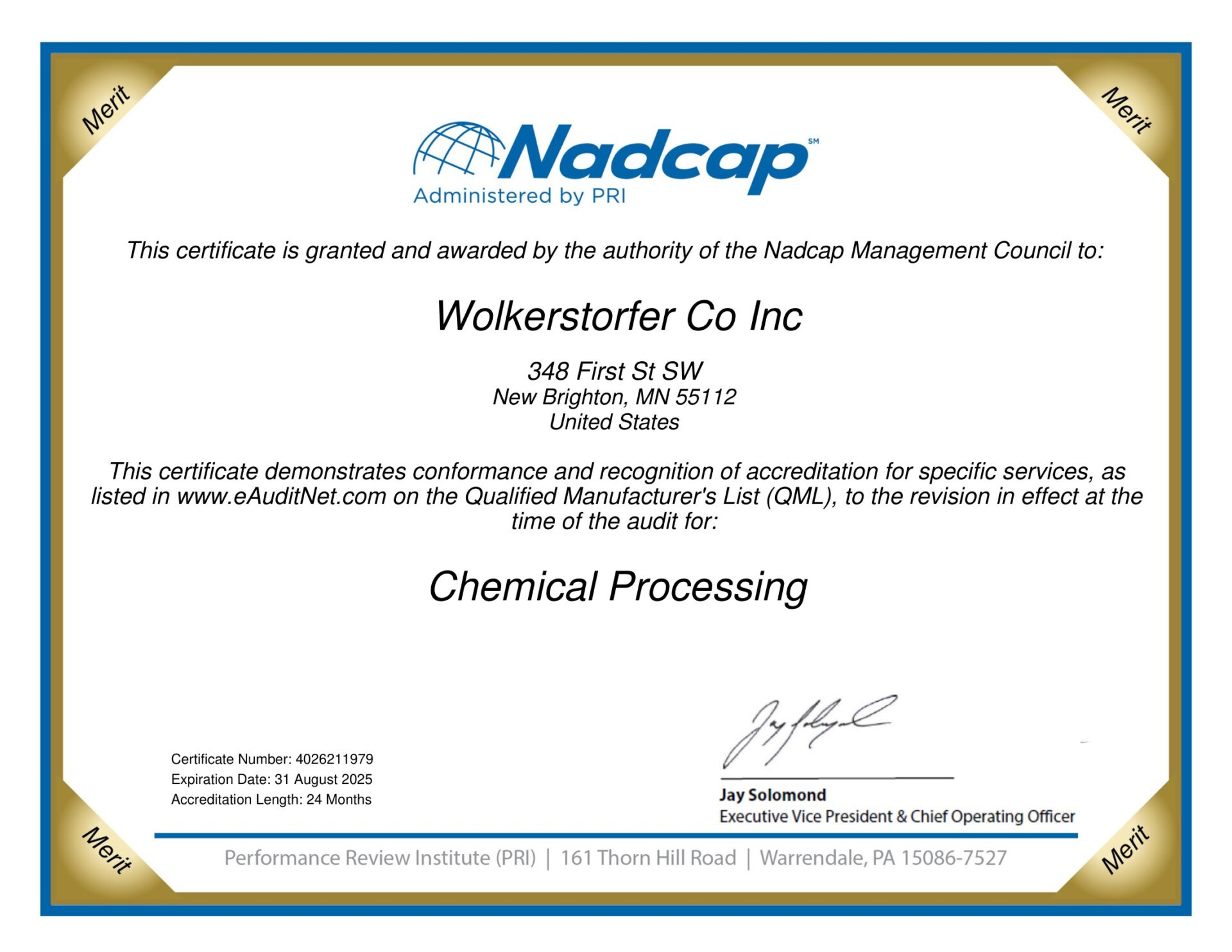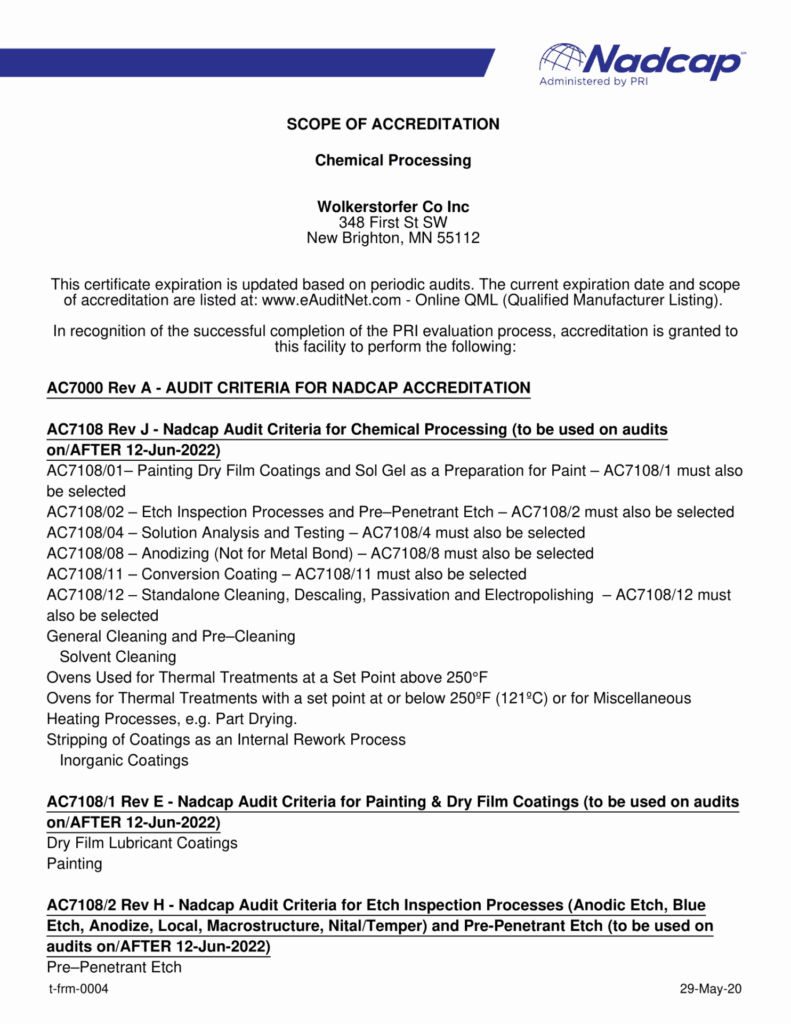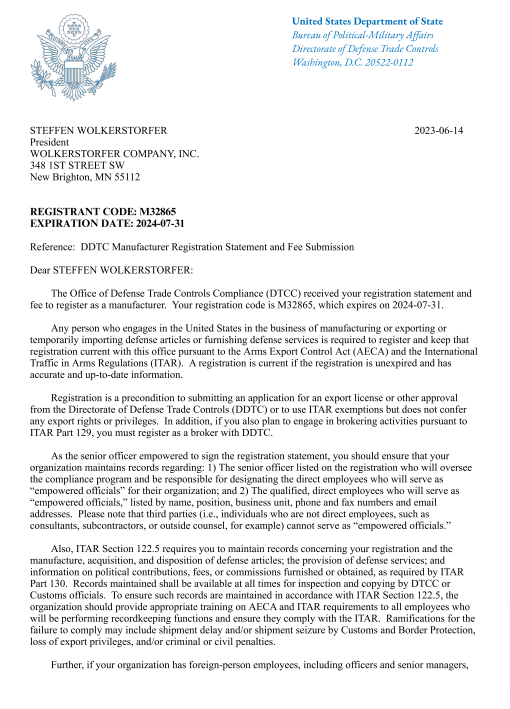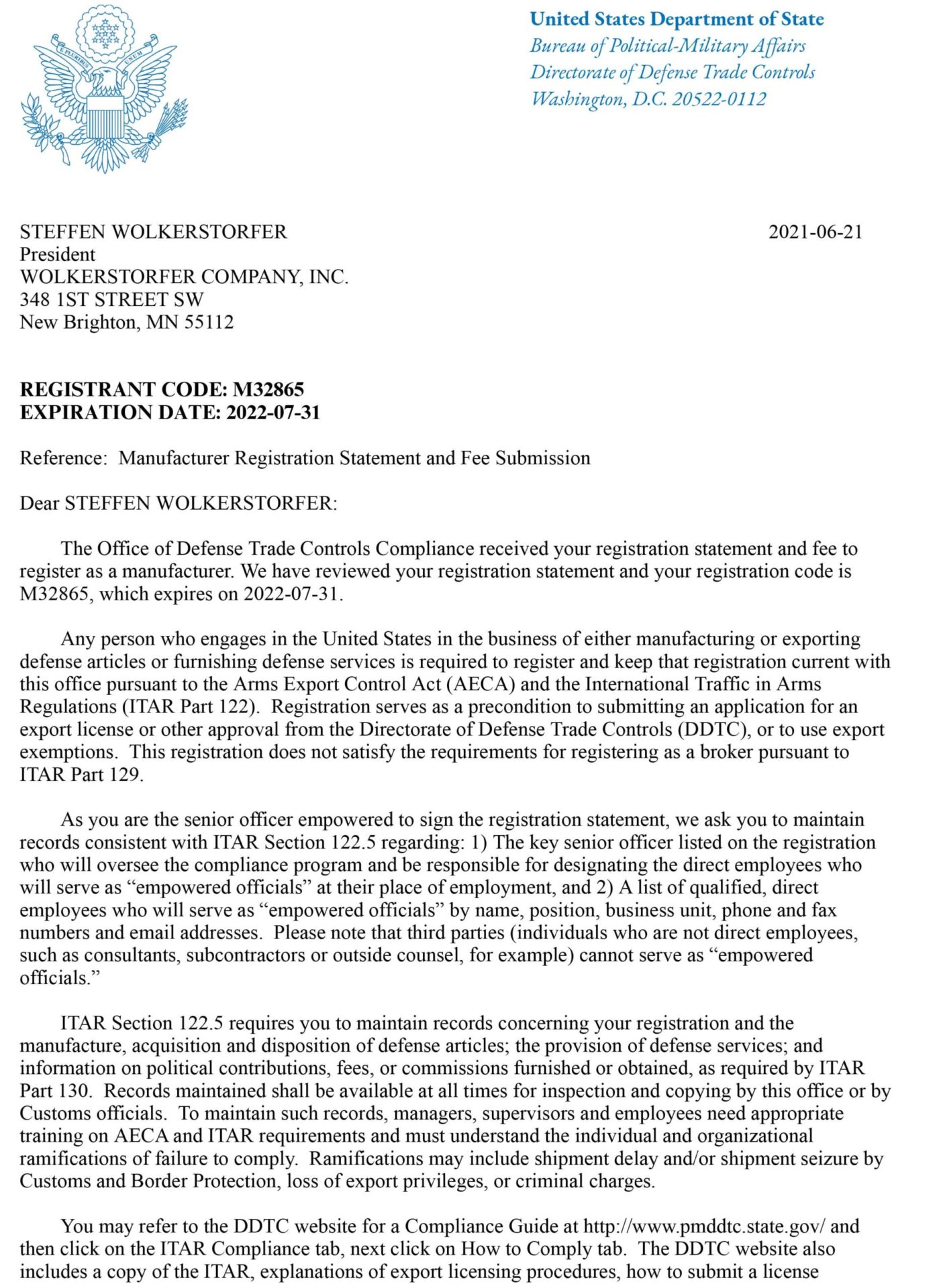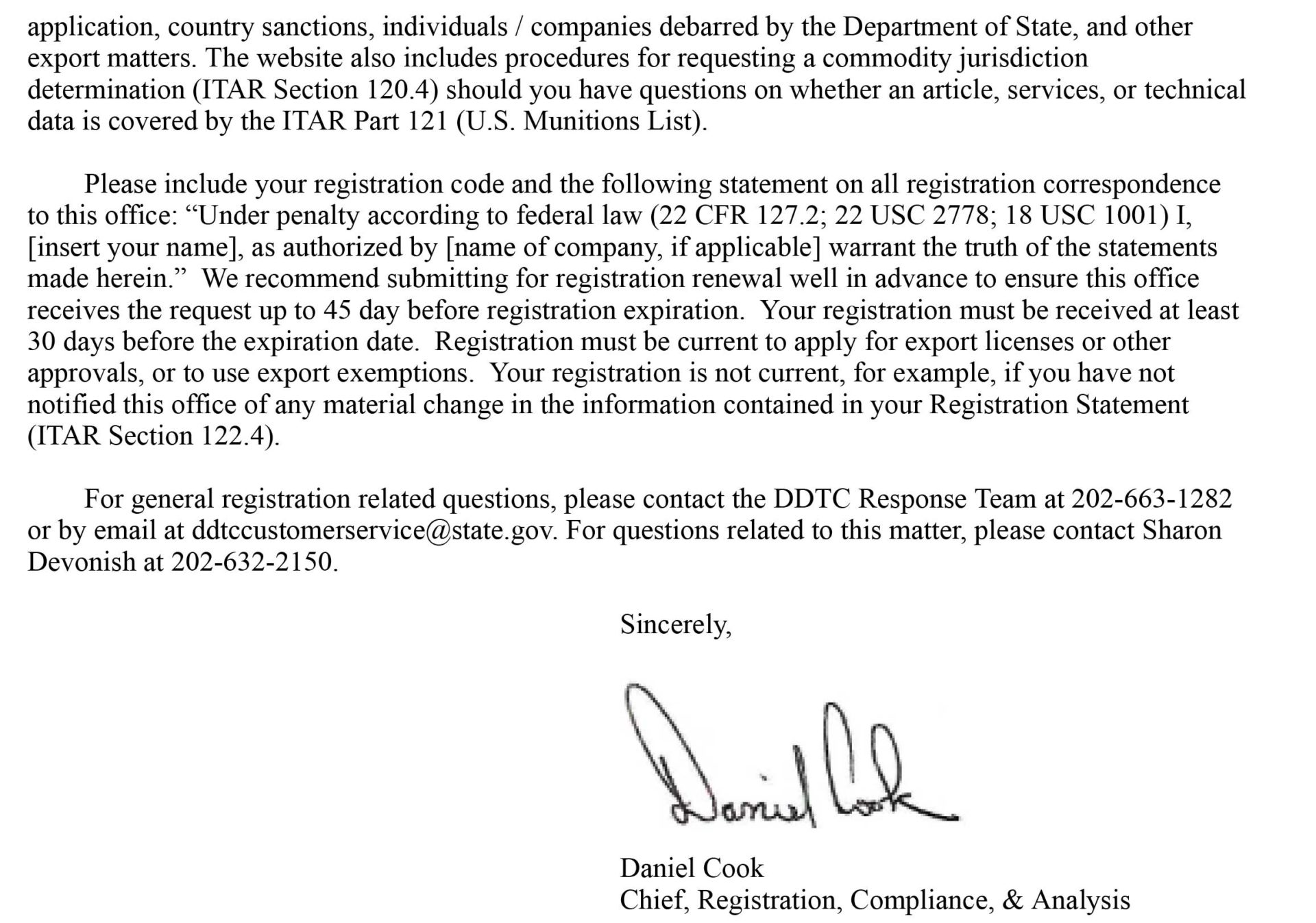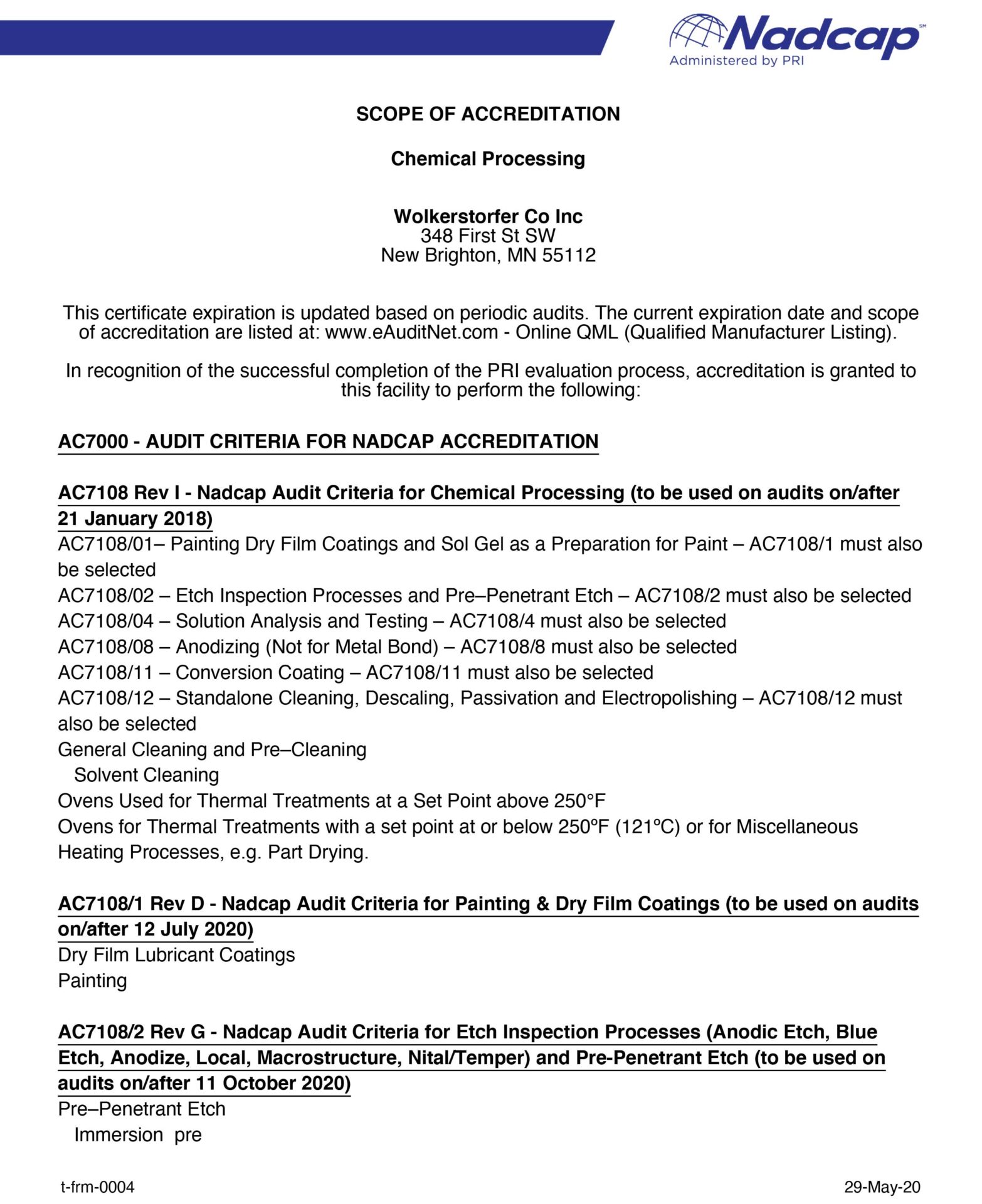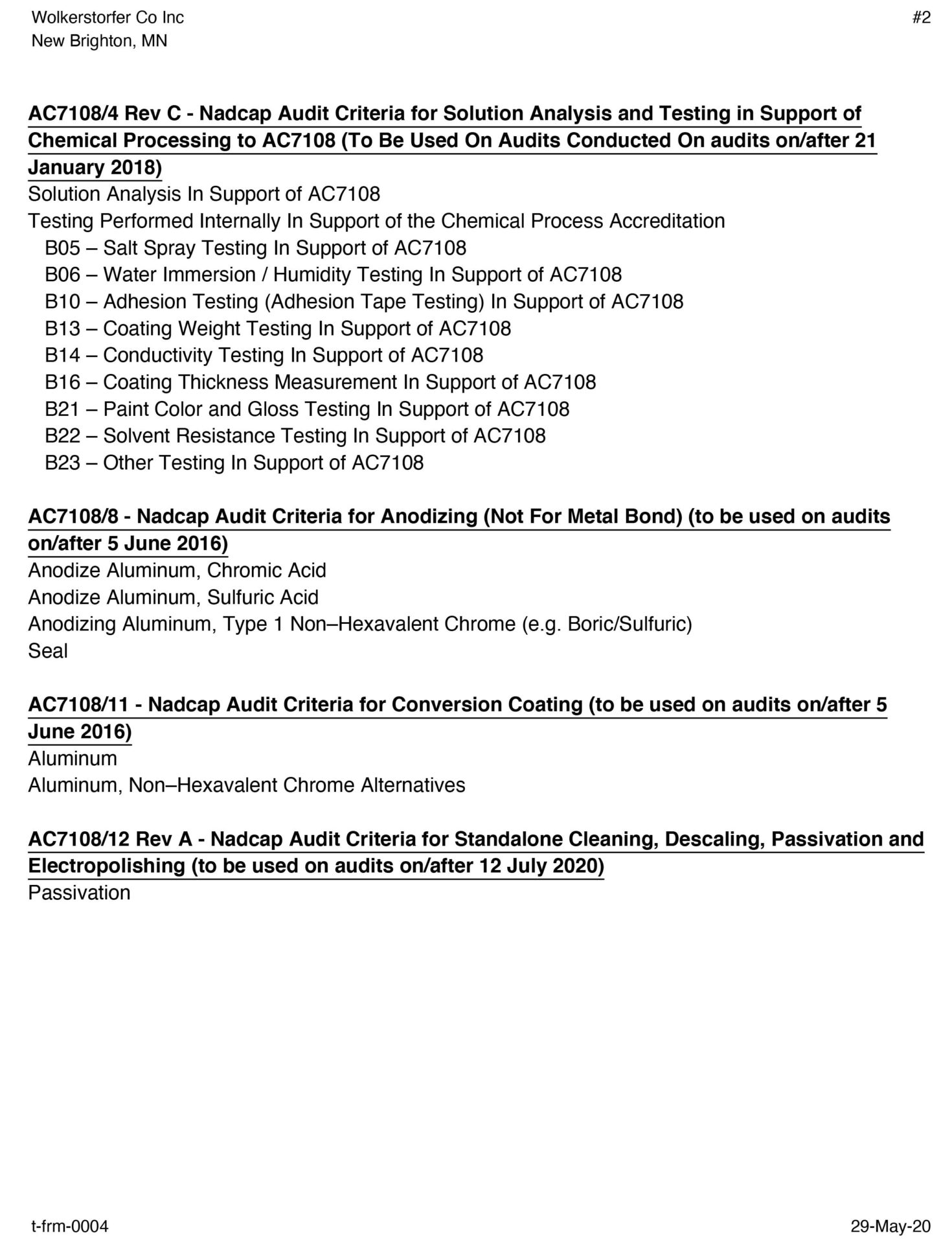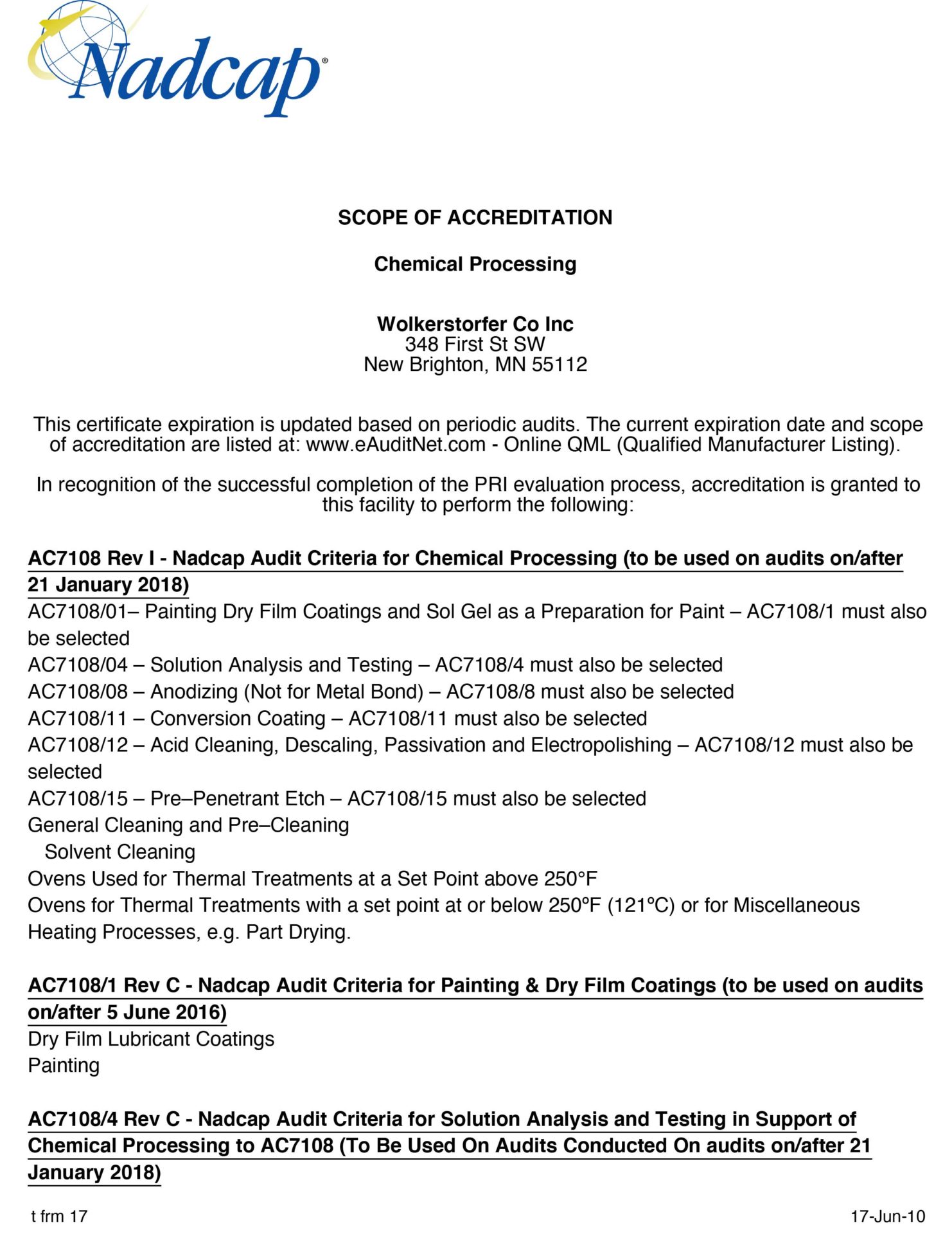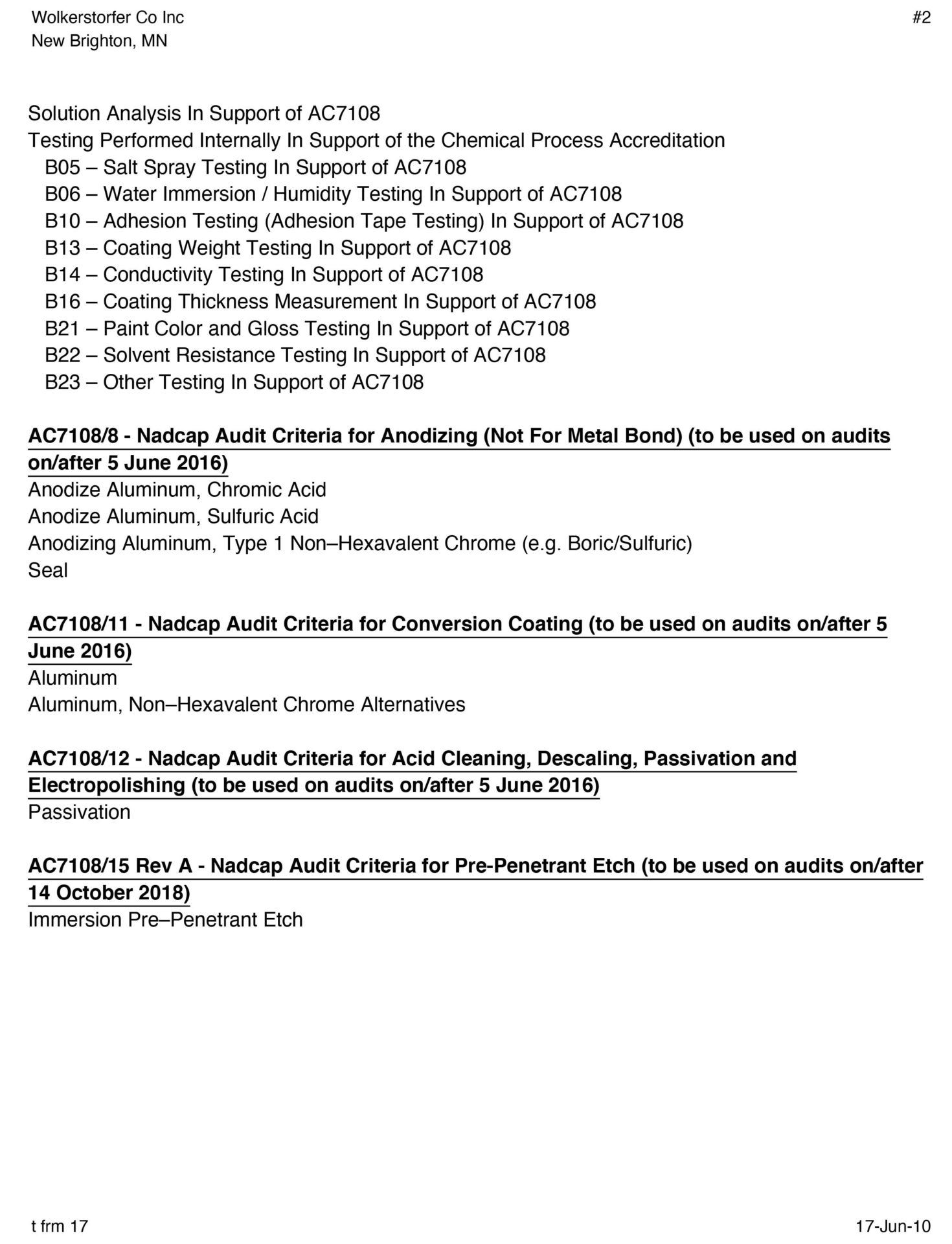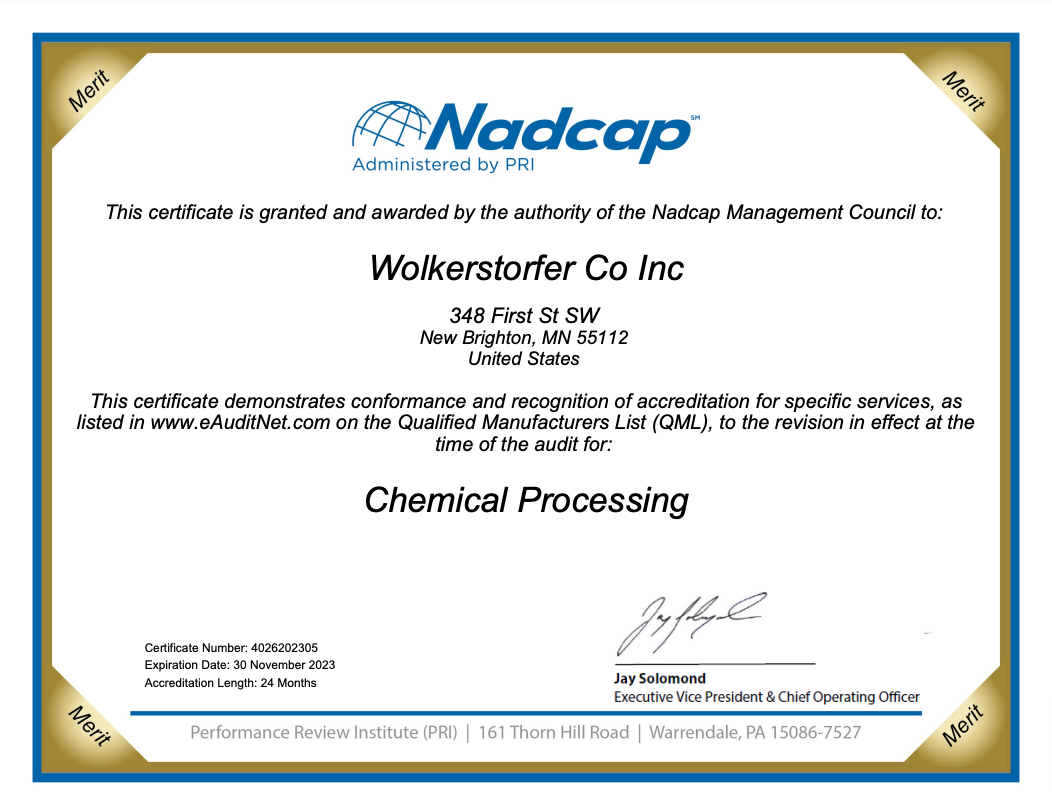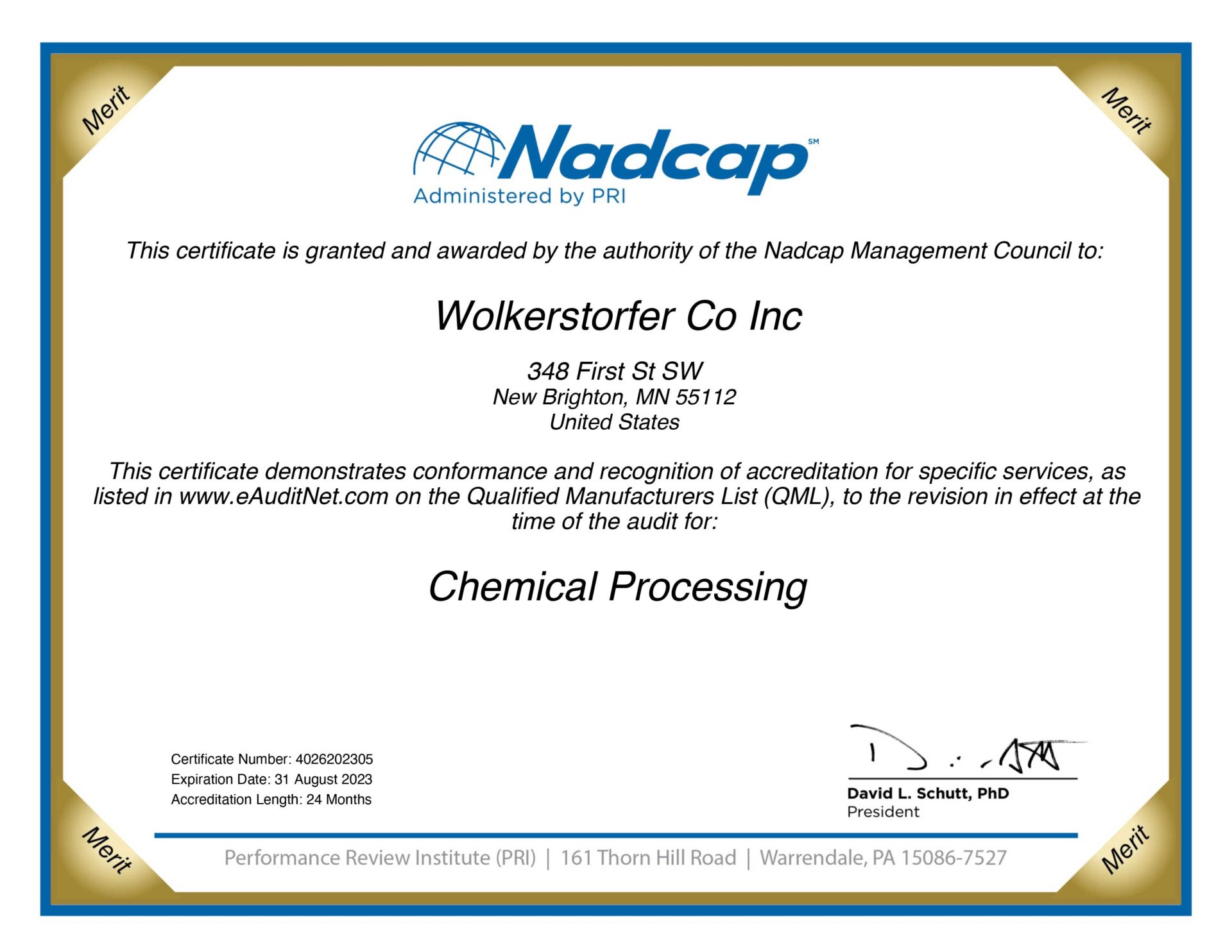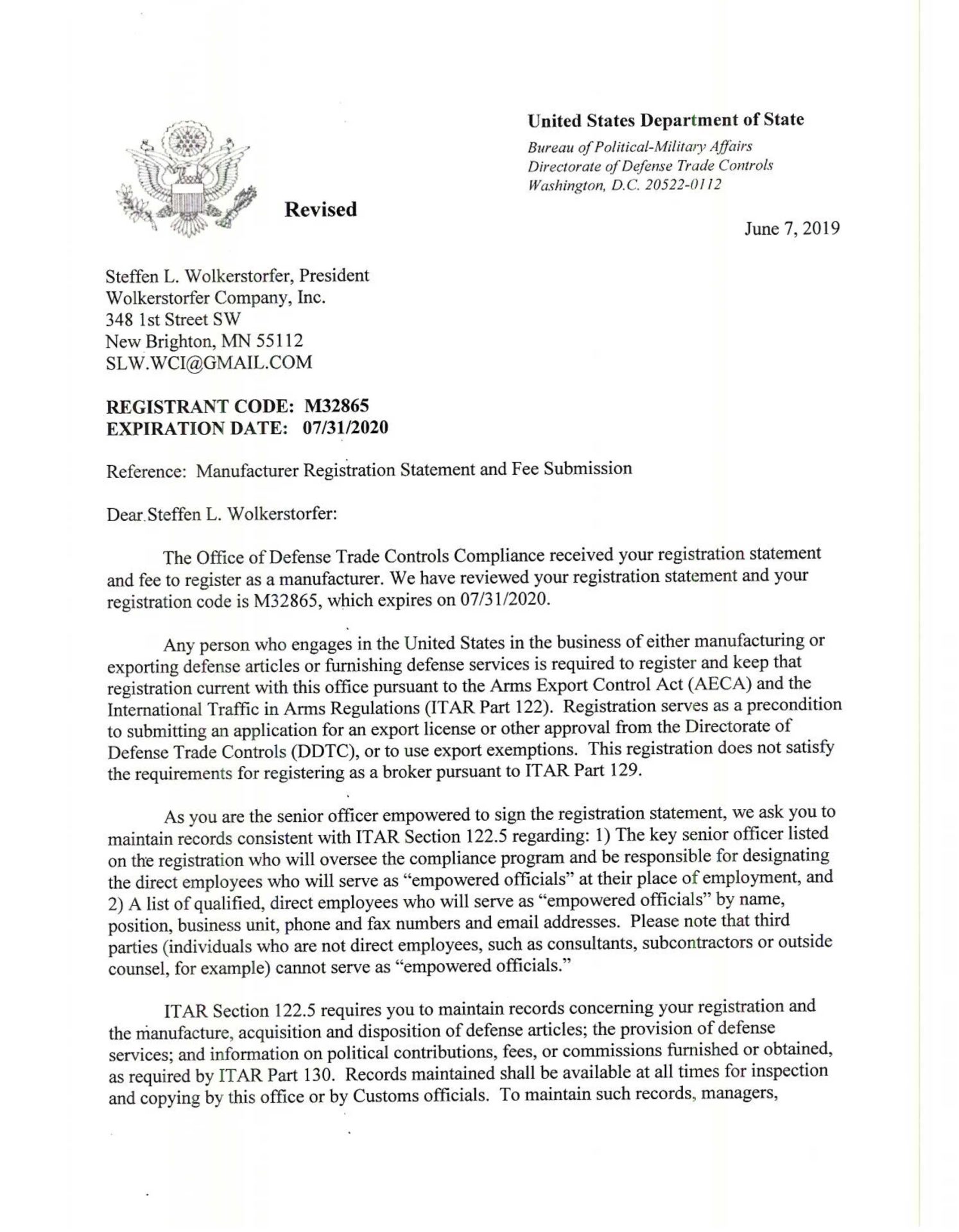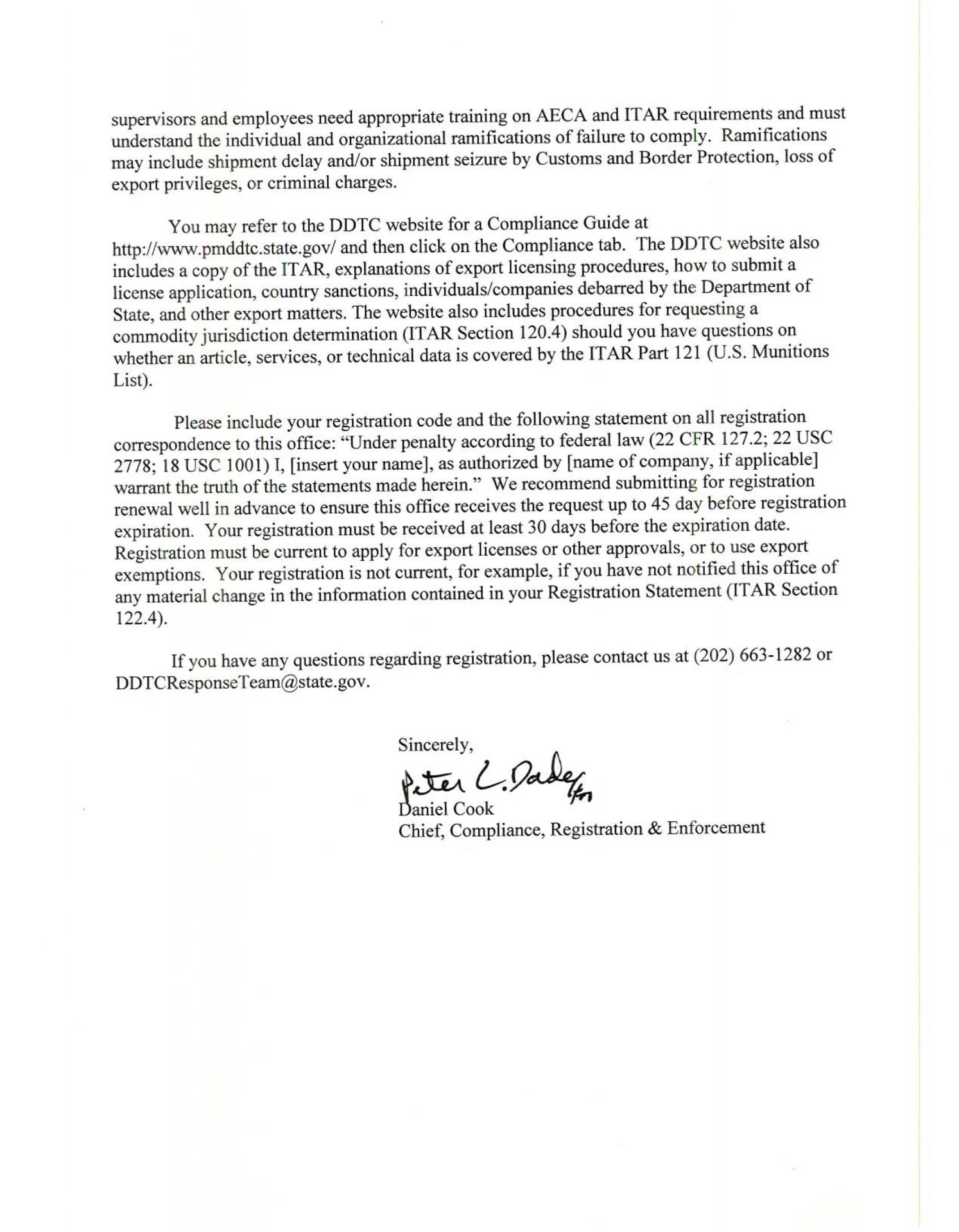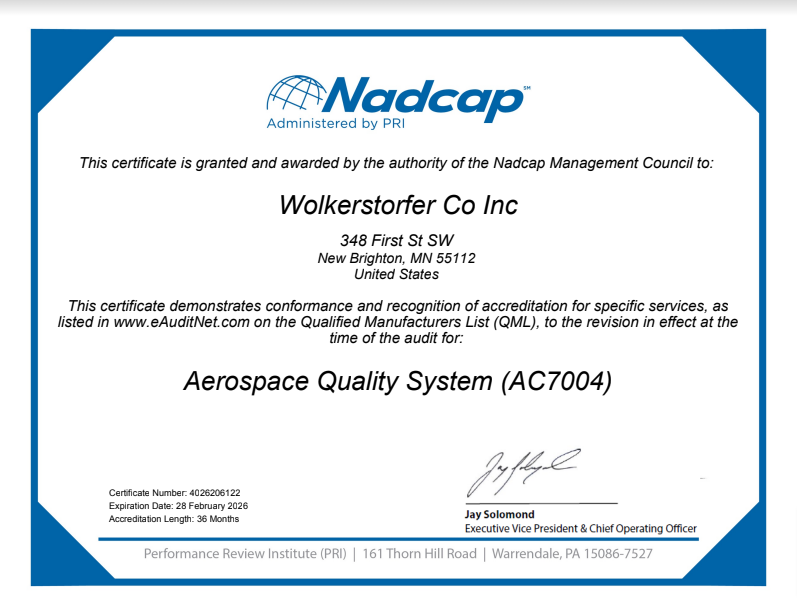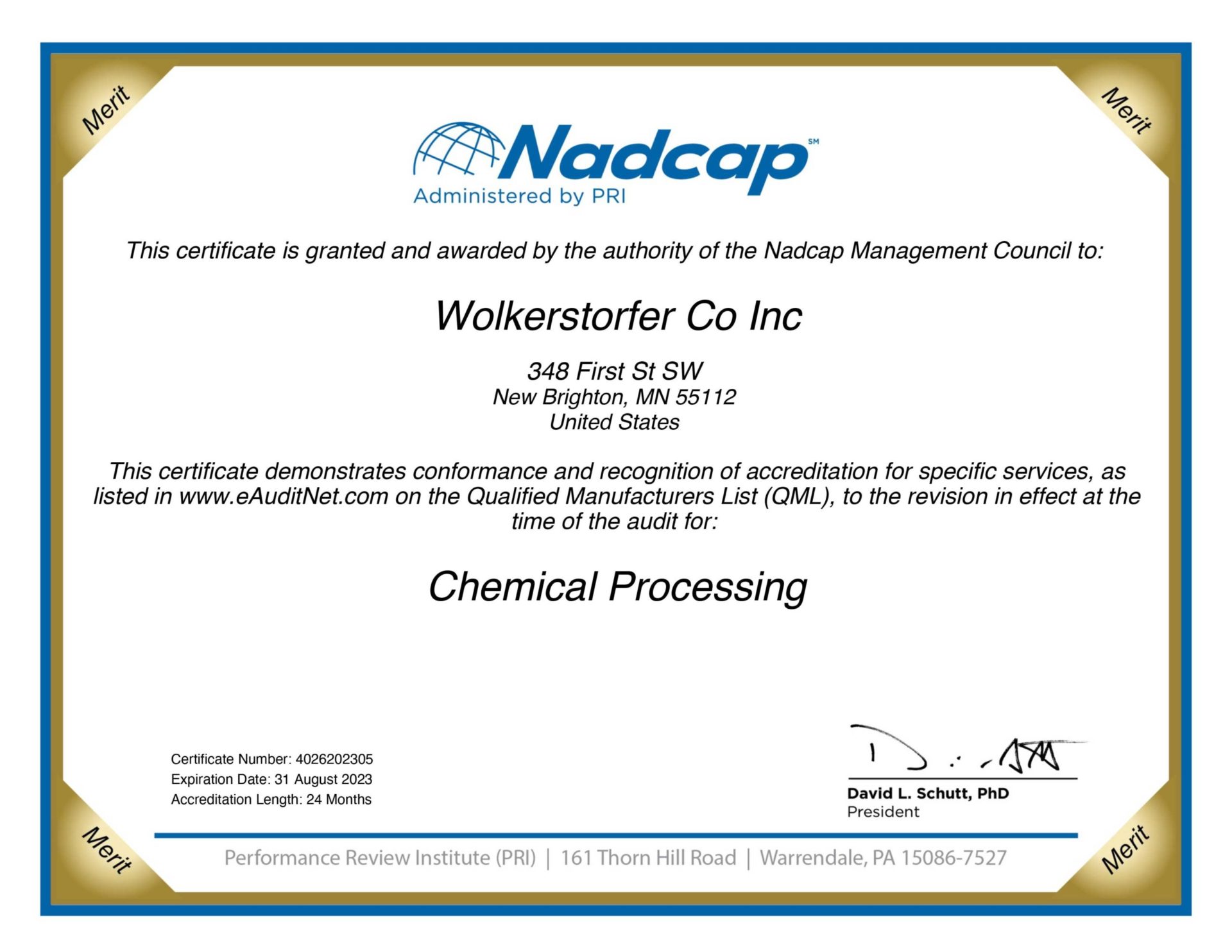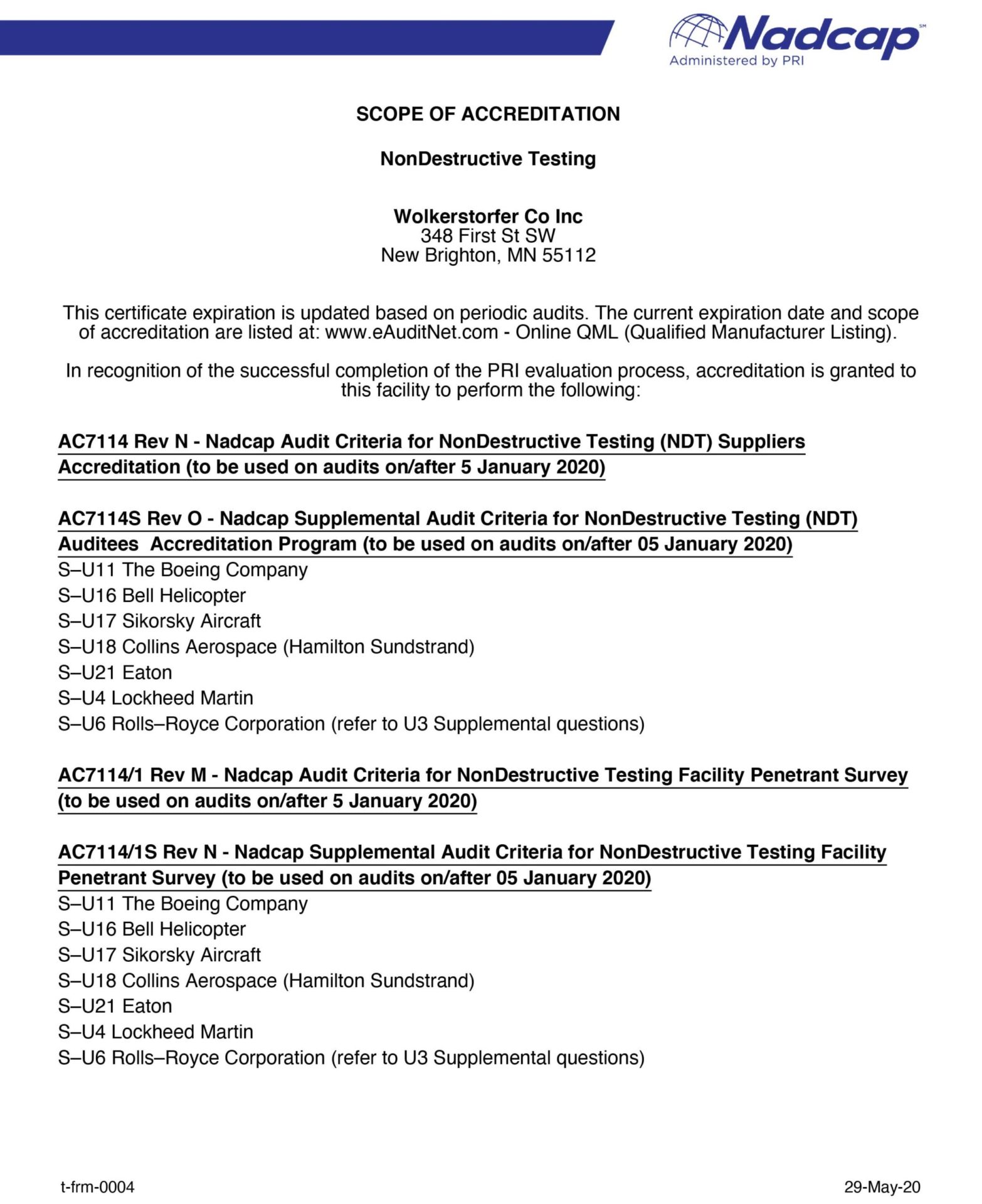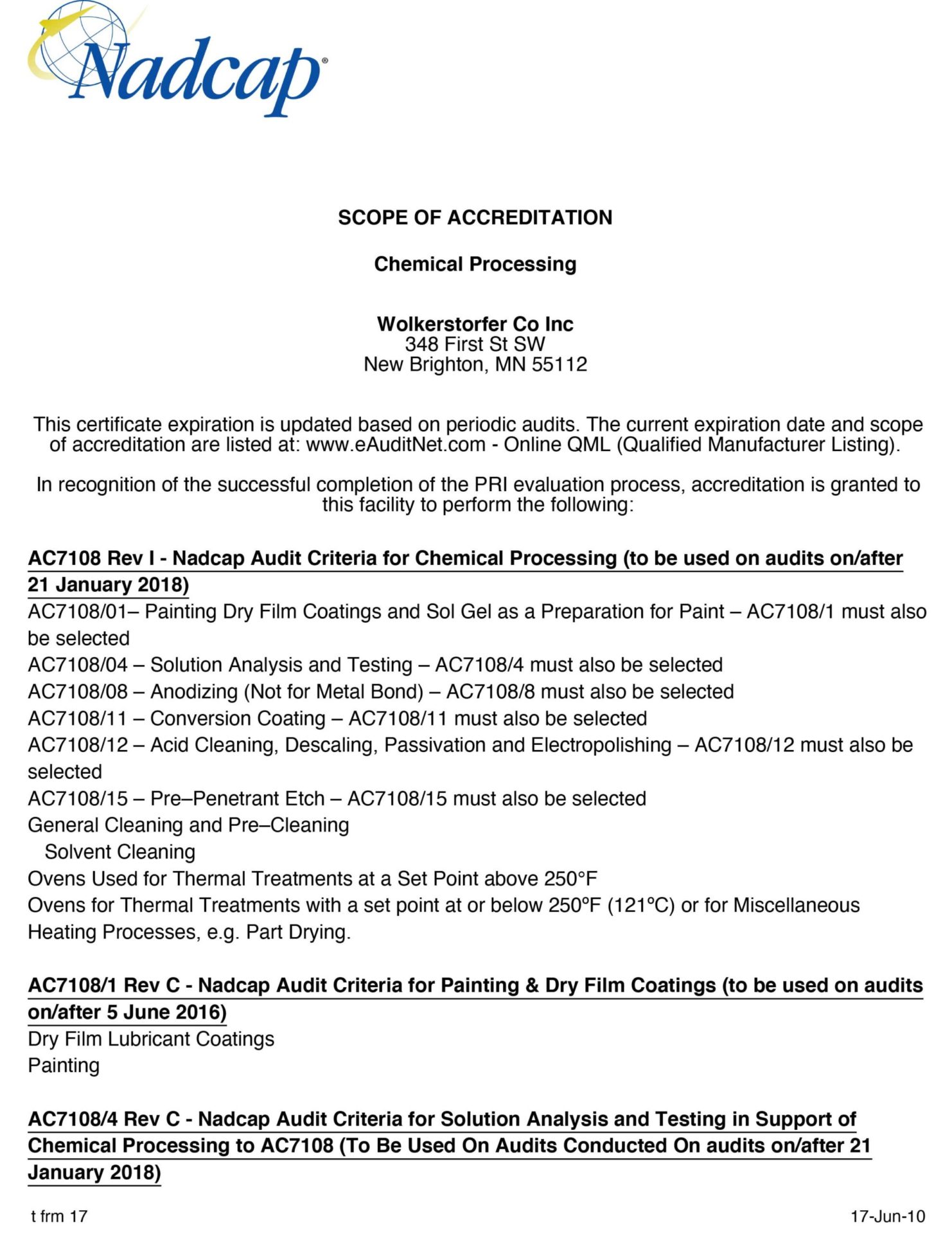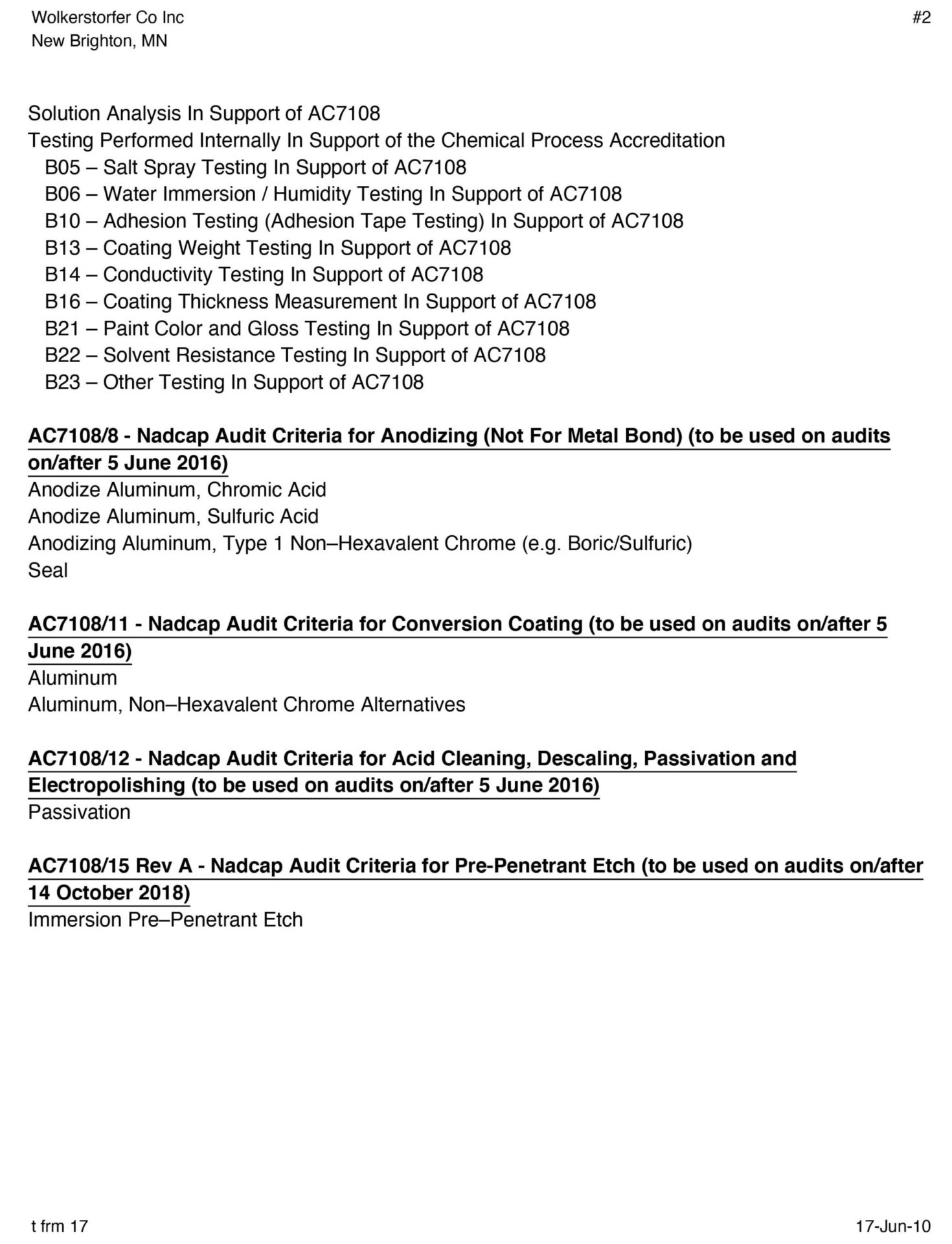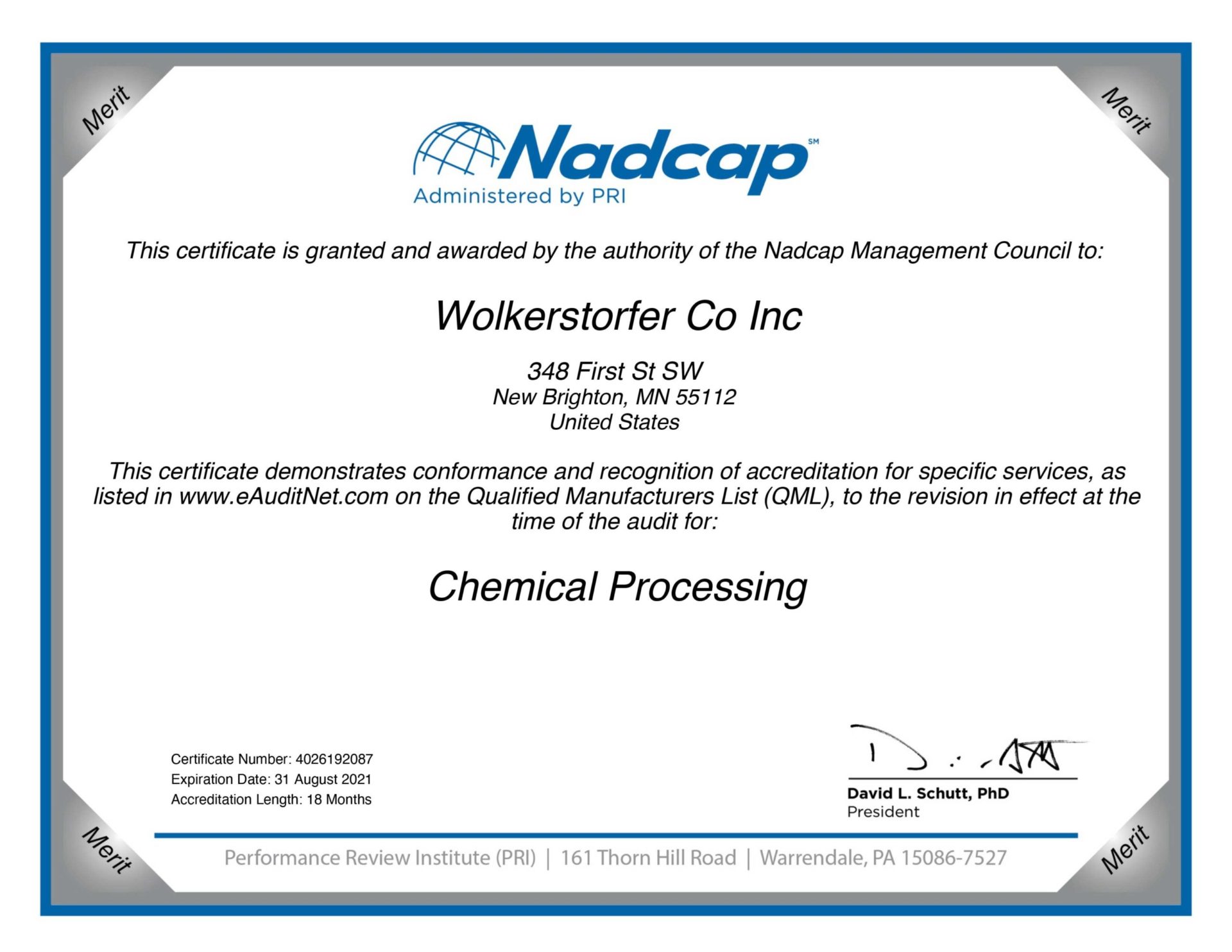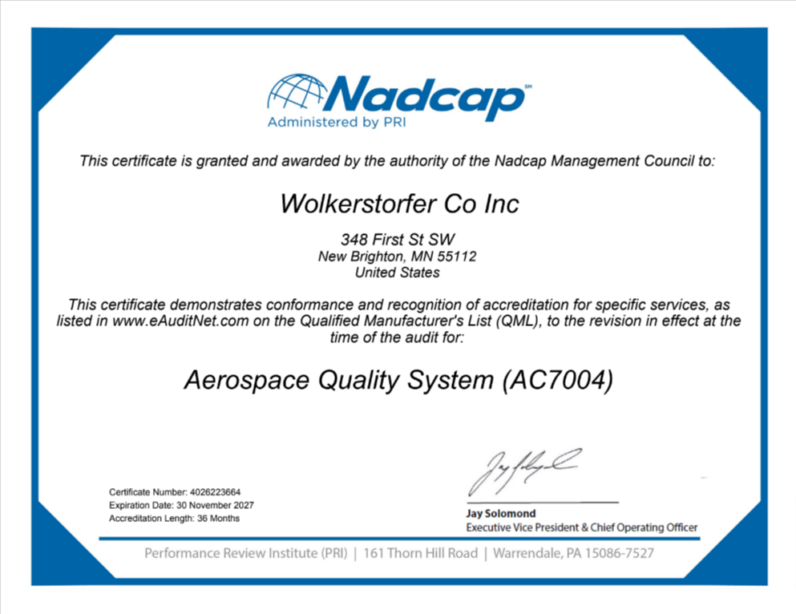Category
24-hour Immersion Testing
440C Stainless Steel
580-0008
580-0036
AC7004
Derived from AS9001, this is the Nadcap Aerospace Quality System document. The Performance Review Institute created AC7004 for small businesses of under 100 employees to compete in the aerospace and defense industries. The AC7004 is based on the larger AS9100. You can see our most recent Nadcap certifications by clicking on this link.
AC7108
This is the overall Nadcap criteria for Chemical Processing. The subsets we are approved for are listed below:
- AC7108/1 Application of Paint, Dry Film Lubricants and Sol Gel
- AC7108/2 Etch Processes
- AC7108/4 Solution Analysis and Testing in Support of Chemical Processing
- AC7108/8 Anodizing
- AC7108/11 Conversion Coating
- AC7108/12 Acid Cleaning, Descaling, and Passivation
You can see our recent Nadcap certifications by clicking this link
AC7108/1
The application of Paint, Dry Film Lubricants and Sol Gel
AC7108/11
Conversion Coating
AC7108/12
Acid Cleaning, Descaling, and Passivation
AC7108/2
Etch Processes
AC7108/4
Solution Analysis and Testing in Support of Chemical Processing
AC7108/8
Anodizing
AC7114
Nadcap - Non-Destructive Testing (NDT). The overall acceptance criteria from Nadcap involving non-destructive testing. You can see our most recent Nadcap certifications by clicking on this link.
Alodine™
A Henkel trade name for a family of various chromate conversion coatings.
AMS 2700
The specification document AMS 2700 offers norms and recommendations for the passivation of stainless steel alloys. Stainless steel can be made more corrosion-resistant by using a chemical process called passivation, which cleans the metal's surface of impurities. The specifications, testing protocols, and processes for passivating stainless steel parts used in manufacturing and aerospace are outlined in AMS 2700.
AMS QQ-P-35
Anodize
A coating, typically formed on aluminum, that provides an anodic aluminum oxide surface. This coating is non-conductive, provides corrosion protection and is also a reliable pretreatment for paint. The two types of anodize we offer are Sulfuric Anodize and Boric-Sulfuric Anodize.
Anodize Seals
AS 5272
ASTM A967
This specification breaks out a number of different chemical systems, including nitric and citric acid solutions for the passivation of stainless steel alloys.
ASTM B117
Details the parameters for conducting a salt spray test to measure the corrosion resistance of different coatings.
ASTM D3359
This test uses a prescribed tape to measure the adhesion of different paint systems on a scale of "0" (complete removal of the paint) to "5" (no peeling or loss of adhesion).
ASTM E1417
This specification sets the base line for the minimum requirements for liquid penetrant inspection.
BAC5423
A Boeing document detailing the procedures to conduct penetrant inspection, following the same parameters as ASTM E1417.
BAC5625
A catalog of different procedures for the preparation and coating of ferrous alloys.
BAC5632
Boeing’s patented anodize process developed to replace chromic acid anodize in aerospace. WCI is not only approved but also licensed to perform this process.
BAC5719
A Boeing controlled document detailing the process instructions for chemical conversion coatings or chem film.
BMS 10-11
BMS 10-60
BMS 10-79
BMS 10-83
Boric Sulfuric Acid Anodize
CARC
Chemical Conversion Coating
Chromic Acid Anodize
(CAA) Meets MIL-A-8625, Type I and Type IB. This coating is in the process of being phased out but is still active in some aerospace and defense applications. The coating contains hexavalent chrome meaning it is NOT RoHS compliant. Wolkerstorfer Co, Inc. no longer offers this coating.
Citric Acid Passivation
CMMC
Coating Weight Testing
Copper Sulfate Testing
CUI
DFARS
DFARS stands for Defense Federal Acquisition Regulation Supplement. It is a set of regulations and guidelines issued by the U.S. Department of Defense (DoD) to supplement the Federal Acquisition Regulation Supplement (FARS). DFARS contains specific requirements and clauses that government contractors and subcontractors must follow when conducting business with the DoD. These regulations cover various aspects of procurement, contract administration, and compliance, with a focus on ensuring the security and integrity of defense-related acquisitions.
DOD
Dry Film Lubricants
ELV
EMI (Electromagnetic Interference)
When electromagnetic waves interfere with the operation of electronic devices, communication systems, or other sensitive equipment, it is referred to as electromagnetic interference, or EMI. EMI can interfere with signals, reduce performance, and cause faults in devices that are impacted.
FARS
The Federal Acquisition Regulation System, or FARS, is a collection of regulations that the federal government of the United States of America enacted to control the procurement and acquisition procedures for federal agencies. A uniform framework for government contracts known as FARS covers a number of topics, including formation, administration, price, and compliance. Its goal is to guarantee government procurement procedures' impartiality, consistency, and transparency.
FCC
In the United States, the regulatory agency known as the Federal Communications Commission (FCC) is in charge of monitoring and controlling a number of areas related to radio frequency usage, broadcasting, and telecommunications. Its goals are to safeguard consumers, maintain fair competition, and oversee the licensing and distribution of wireless spectrum in order to minimize interference and encourage effective use of available communication resources.
Fluorescent Penetrant Inspection
Friable Coating
Hexavalent Chem Film
Iridite™
ITAR
Manganese Phosphate
MIL-A-8625
MIL-C-8514
MIL-DTL-16232
MIL-DTL-53030
MIL-DTL-53039
MIL-DTL-53072
MIL-DTL-5541
MIL-DTL-64159
MIL-DTL-81706
MIL-L-23398
MIL-PRF-22750
MIL-PRF-23377
MIL-PRF-46010
MIL-PRF-46147
MIL-PRF-53022
MIL-PRF-81329
MIL-PRF-85285
MIL-PRF-85582
MIL-PRF-8625
MIL-PRF-8625 is a military specification that outlines the requirements and standards for the anodizing of aluminum and aluminum alloys. Anodizing is an electrochemical process that creates a protective oxide layer on the surface of aluminum, improving its corrosion resistance and durability. MIL-PRF-8625 lists the different types, classes, and performance standards for anodizing processes used in aerospace and military applications. This is done to make sure that the quality and performance of anodized aluminum parts are always the same.
MIL-STD-1907
Nadcap
NIST 800-171
The National Institute of Standards and Technology published 800-171 to establish guidelines to handle Controlled Unclassified Information (CUI) among other security protocols.
Nitric Acid Passivation
NonDestructive Testing
Paint
Passivation
Phosphate
PN 14.06-03
Collins Aerospace Hamilton Sundstrand Thin Film Sulfuric Acid Process Specification
PN 16.03
Collins Aerospace Hamilton Sundstrand Liquid Penetrant Inspection Specification
Pre-Penetrant Etching
Primer
QQ-P-35
REACH
RFI (Radio Frequency Interference)
When different electronic devices create radio frequency signals that interfere with the operation of other nearby devices or systems, this is known as radio frequency interference (RFI), an undesired and disruptive kind of electromagnetic interference. In wireless and electronic systems, RFI can result in decreased signal quality, hiccups in communication, and degraded performance.
RoHS
SAE AS1701
SAE AS5272
This SAE specification establishes the basic instructions to apply dry film lubricants at a variety of thermal curing temperatures.
Salt Fog Testing
Skydrol
A brand of aviation hydraulic fluid called Skydrol is used in the hydraulic systems of aircraft. Because of its well-known ability to withstand fire, it is essential to maintaining aircraft safety. Skydrol facilitates power transmission in an aircraft's hydraulic systems, such as those for the landing gear, brakes, and flight control surfaces. Its fire-resistant qualities increase overall aviation safety by lowering the possibility that hydraulic fluid will ignite in the event of an aircraft fire.
Sulfuric Acid Anodize
(SAA) Meets MIL-PRF-8625, Type II and Type IIB. This is the most frequently designated anodize system and is a RoHS compliant coating as applied, but if non RoHS dyes or seals are called out after the anodize process, it may not be RoHS compliant.
Teflon™
A trade name for polytetrafluoroethylene. This synthetic resin provides excellent lubricity under light loads.
Thin Film Sulfuric Acid Anodize (TFSAA)
Meets MIL-PRF-8625, Type IIB. This is a RoHS compliant coating as applied, but if non RoHS dyes or seals are called out after the anodize process, it may not be RoHS compliant.
Topcoat
Trivalent Chem Film
TT-C-490
Type I, Zinc Phosphate is very commonly called out for commercial and government contracts. This coarse grain crystal coating has a coating weight of 400 mg/ ft2 on average.






